US Sealift Command's fastest vessels blocked in Baltimore
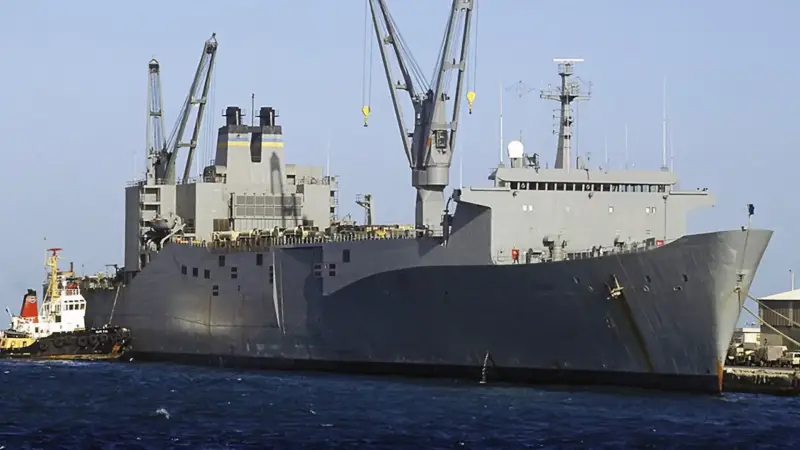
Algol-class ship
The fastest in the world
Based on an article from The WarZone with almost the same title, where Joseph Trevithick complains about fate and laments the bridge incident. And then there will be my addition, the sailors should like it.
Two Algol-class transport vessels, which are also among the world's fastest cargo ships of their size, and two other Reserve vessels fleet were in the Port of Baltimore when the bridge incident occurred. At the time of writing, ship traffic in the port has been suspended indefinitely.
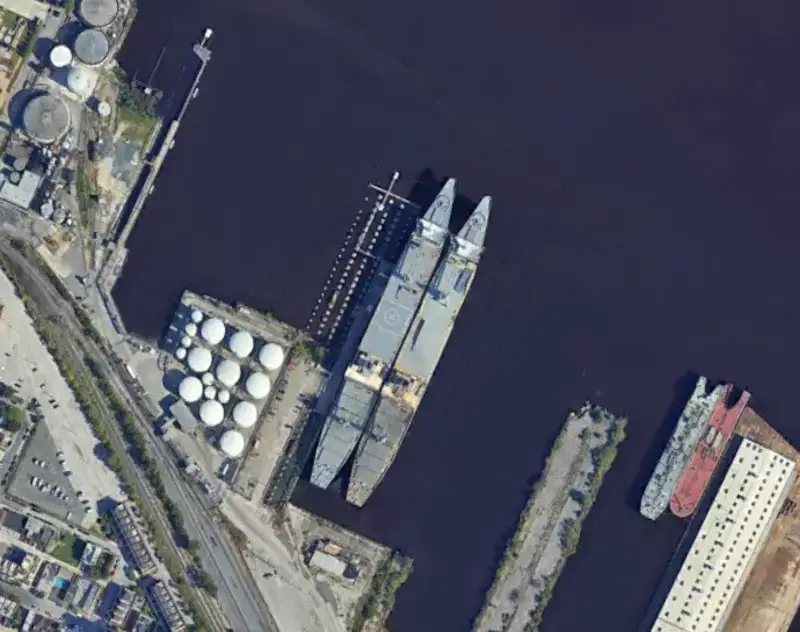
Satellite image, September 2023: SS Antares and SS Denebola at berth
The vessels in question are the SS Antares and SS Denebola. Both are part of the Reserve Fleet (RRF), which is managed by the Maritime Administration of the Ministry of Transport (MARAD). Its ships are crewed by civilian merchant seamen.
When vessels are engaged for any military transport operations, they fall under the control of the US Naval Sealift Command (MSC, Military SeaLift Command). Until then, they are usually in a partially operational state with a reduced crew. The activation process can take anywhere from five to 10 days, depending on the vessel in question.
Two other Reserve Fleet vessels also located in Baltimore are the ro-ro ships Cape Washington and Gary I. Gordon.
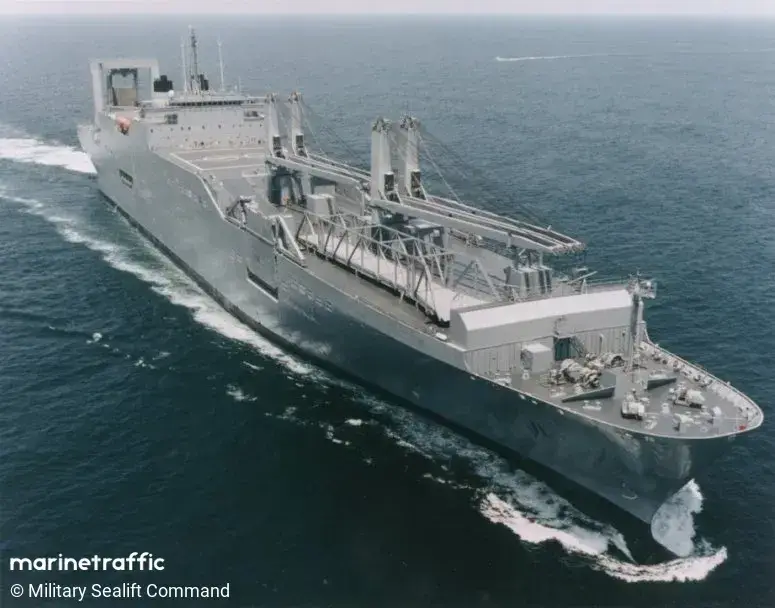
MV Gary I. Gordon
Another ship of the same series, the Cape Wrath, is assigned to the port of Baltimore, but marinetraffic data shows that it is still in the Atlantic Ocean, heading from Antwerp somewhere to the Chesapeake Bay. In principle, the river on whose banks Baltimore is located flows into this bay, so perhaps he was heading to Baltimore - but now he will have to look for another refuge.
All Reserve Fleet vessels in Baltimore are designated as "ROS-5," which means they must be ready to go to sea within five days of receiving orders to activate, MARAD said. The War Zone has reached out to MARAD for more information about the Reserve Fleet ships in Baltimore and what they intend to do in response to yesterday's incident.
A bit of history
Be that as it may, the current situation with the Antares and Denebola ships in Baltimore is quite remarkable, as is their story.
This pair represents a quarter of the entire Algol-class, which, as noted, are particularly fast multi-purpose cargo ships. This series of ships was built in the 1970s in shipyards in the Netherlands and West Germany for the (now defunct) American shipping company SeaLand. They had an officially declared maximum speed of 33 knots (61 km/h).
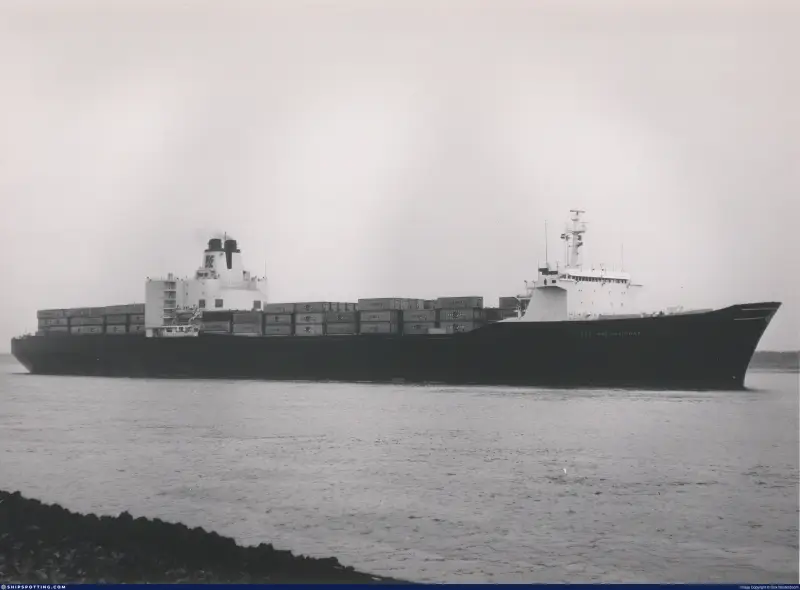
Photo from 1976 - this is what they looked like
In terms of speed, the Navy has even faster Spearhead class transports that are capable of at least 35 knots (supposedly their top speed is up to 45 knots), but they have a much lower payload capacity.
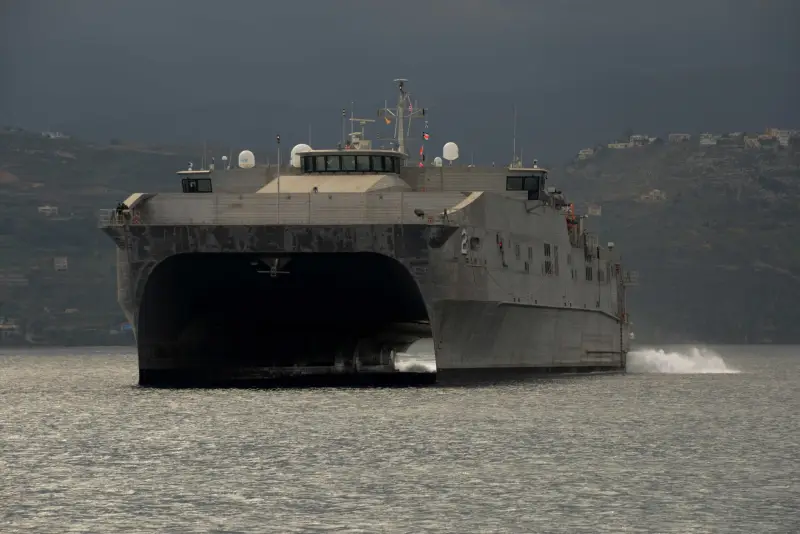
Fast expeditionary transport of the Spearhead type
The ships, now called the Algol class, were once the fastest container ships in the world. SeaLand called them SL-7. Their power plant was a steam turbine with a total capacity of 120 thousand hp. With.
Soon after their construction, another Arab-Israeli war broke out, the Suez Canal became inaccessible for a long time, oil began to be transported around Africa, and in the end, all these events greatly influenced the price of fuel - naturally, in the direction of its increase.
Container ships, which consume 600 tons of fuel per day, became unprofitable, and in the 1980s the company sold these ships to the government.
At first, they were directly subordinate to the maritime transport command and received new names, traditional for the Navy. They also underwent restructuring, receiving their own cargo devices and the ability to transport wheeled and tracked vehicles, and received the designation FSS - Fast Sealift Ships (Simply put, they were container ships, but became ro-ro ships. The history of the conversion deserves a separate story in itself).
In the late 2000s, the ships were brought under the control of MARAD, and the naval prefix USNS before the names was replaced by the civilian SS.
At the moment, these vessels differ somewhat in terms of useful volume and are divided into three groups.
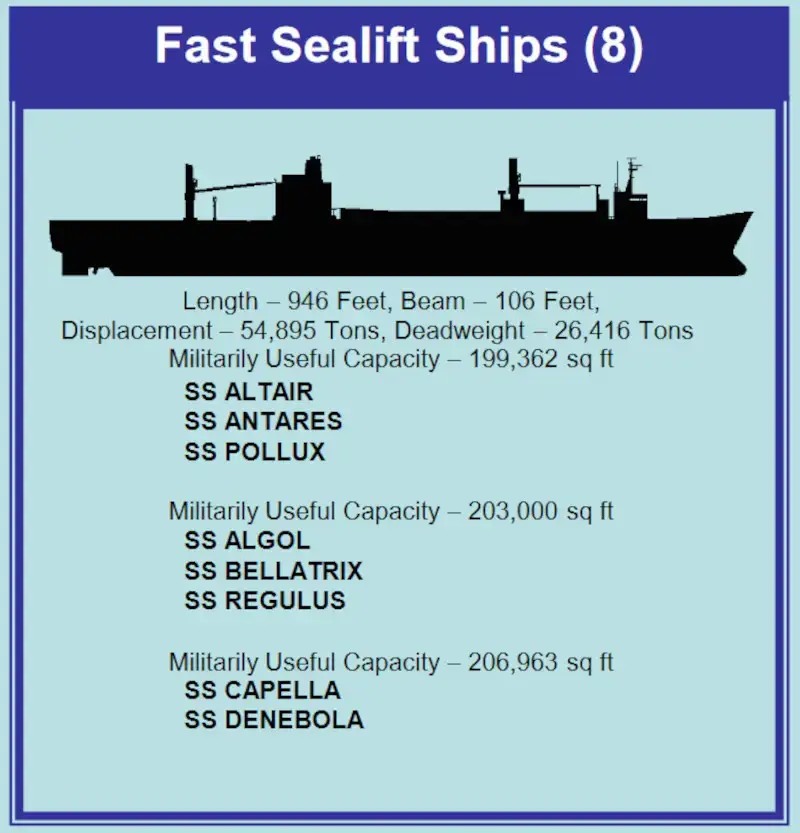
Algol class vessels are often involved in military transport operations. For example, just five of these ships carried almost 20% of the cargo needed for Operation Desert Shield (the first part of Operation Desert Storm, namely the concentration of multinational coalition forces).
They then continued to participate in supplying troops and transported almost 15% of the supplies delivered from the United States to Saudi Arabia. They subsequently participated in the transportation of military supplies to Somalia, the Balkans in the 1990s, and in the initial phase of operations in Afghanistan and Iraq in the 2000s. They also actively participated in large exercises and the delivery of humanitarian supplies.
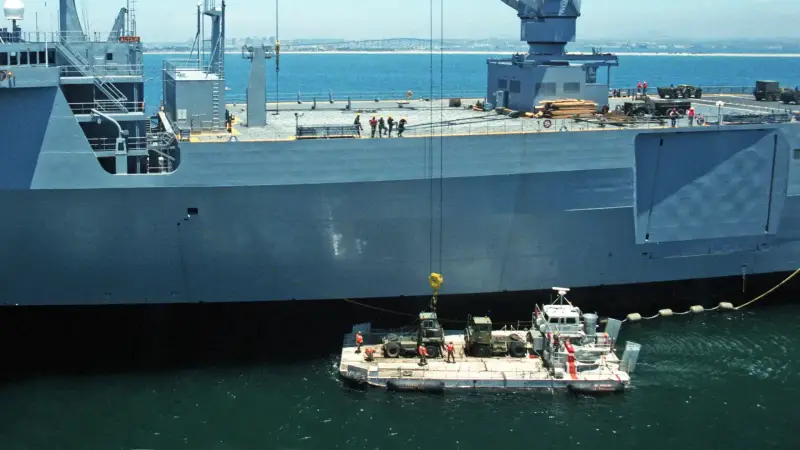
USNS Altair on exercise in 1986
As for the Cape Washington and Gary I. Gordon, they are only a small part of the ro-ro vessels owned by the Reserve Fleet. There are almost 30 of them there.
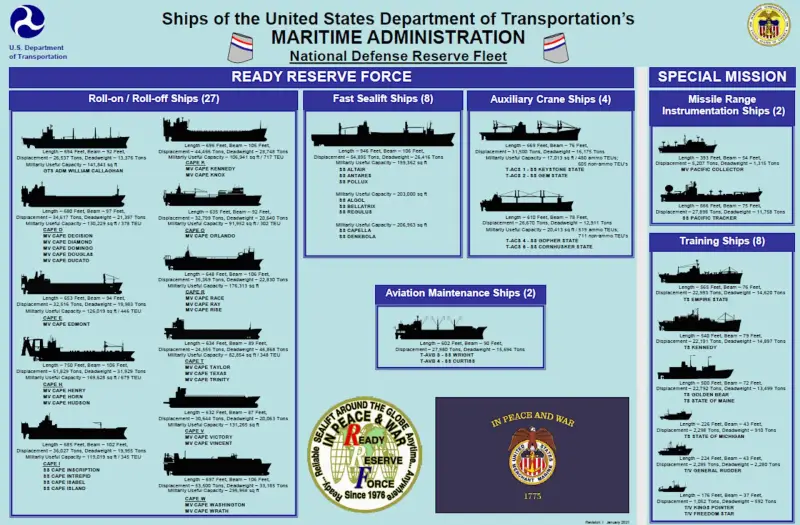
The events in Baltimore come at a time when the capabilities of Sealift Command vessels are in high demand.
They are needed to transport military cargo in the Pacific region and to Europe (in light of events known to everyone). The military command even uses civilian ships to transport tanks Abrams and Bradley armored personnel carriers to complete intermediate delivery points in Europe.
The USNS Roy P. Benavidez is currently heading to the Mediterranean Sea, carrying equipment for a temporary floating berth through which humanitarian aid will be delivered to the Gaza Strip.
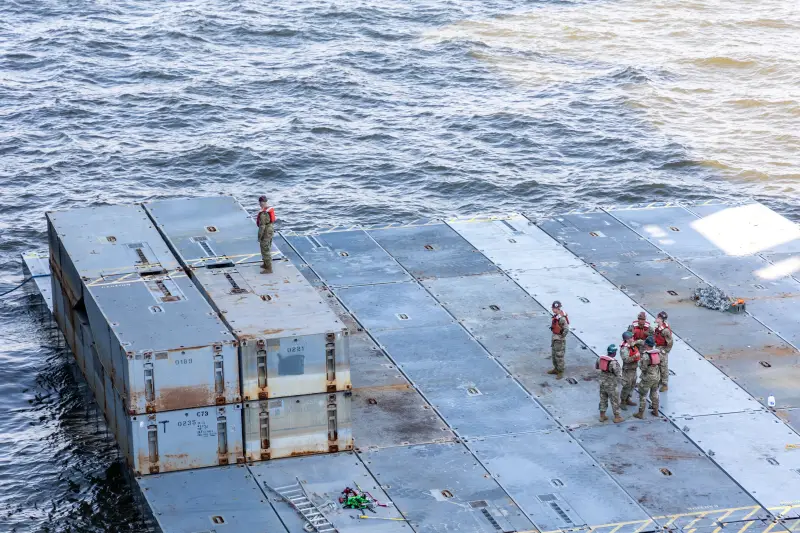
For many years, there have been doubts about whether Sealift Command's capabilities are adequate to meet current needs. In 2019, at least 11 ships of the Reserve Fleet were unable to go to sea at all.
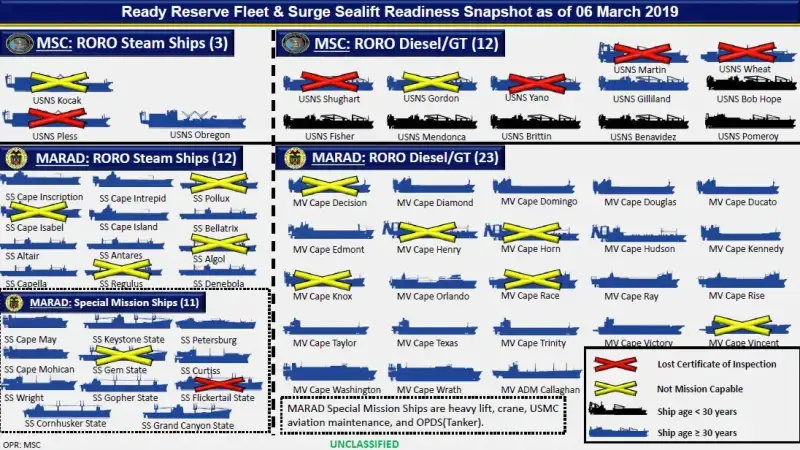
The current state of readiness of the Reserve Fleet as a whole is unknown.
The director of the Reserve Fleet, retired Rear Adm. Ann Philips, told a House Armed Services hearing last year that she was "not at all confident" that all of the Reserve Fleet's vessels could be called upon if needed.
The Navy's current policy to expand maritime capabilities is to "provide financing assistance" for the acquisition of private vessels.
The Baltimore incident now poses an additional complication for the Reserve Fleet as four of its ships, including two of the high-performance Algol class, are blocked in port.
End of text from WarZone, and now my own. Well, I can't resist.
Comment
When I started working in the Navy, on one of the ships I came across an old set of Marine Fleet magazines, which I read with pleasure. In the middle of each magazine there were two sheets with short ancient the news world fleet, and in one of them I saw a photo of such a ship with a brief description.
The power of 120 thousand horses, the size and speed of 33 knots, the architecture with two superstructures made an impression, as did the fact that the flight from Yokohama to Seattle took them 5 days.
Much later, I ended up working on bourgeois ships, and worked several times on large container ships with a speed of 25 knots. And once, during one contract, I ran along exactly this route several times in a row.
General savings and concern for the environment had not yet reached their peak, and the transition took us 8 days with an average speed of 23–24 knots. And most importantly, during these 8 days we changed the clocks nine times. We did this during the day, but it was still unpleasant.
By the end of the third such flight I wanted to sleep, either during the day, then in the morning, or in the evening, but not at night. And in general there was somehow an equal share of everything in the world.
It was then that I remembered what I had read, and wondered - how did they get out of the situation?
While preparing the article, on some forum I found the memoirs of those who worked on these ships, and I could not resist.
Memories
So what do eyewitnesses say? The exchange of views took place in 2009.
The ship had two engine rooms, each containing two boilers and one steam turbine with all the necessary auxiliary mechanisms. There were also two propellers, but there was only one rudder, and this created some difficulties when maneuvering at low speed, for example, mooring and unmooring in ports.
About speed
There are different memories about speed:
– 33 knots were never developed, usually it was 24–26 (which, of course, is also a lot);
– the average speed was about 30 knots). Once on a voyage one boiler had to be stopped, and the ship could still make 21 knots;
– the speed was always more than 30 knots.
Fuel consumption
About fuel consumption: one of those who worked there recalls that 2 gallons of Bunker C fuel burned per hour (that is, 8 liters, if these are American gallons - and what else. The specified fuel has a specific gravity of 300 to 0,95, so if we take 1,03, we get 1,0 tons per day. Then it turns out that their car was more economical than ours - the ship on which I traveled from Yokohama to Seattle, because we used 200-210 tons per day. But this cannot be, because a low-speed diesel engine is more economical than a steam turbine plant. Perhaps the person is referring to the fuel consumption of one turbine. Okay then, but 220 tons per day... no wonder they were running at a reduced speed).
Another writes that 5 bbls were consumed per day - if these are barrels, then it turns out to be an incredible amount of 000 m3.
Power point
No automation - the recaller believes that this was done on purpose, out of savings, because mechanics had to be paid an extra 10% for work on an automated vessel (back in the day!).
The MKO had a regular 4-hour watch; each watch had a mechanic and two mechanics. There were big problems with the seawater system for cooling the condenser: the main seawater and the corresponding pipeline was more than 2 meters in diameter, the water velocity in it was very high, and quite soon problems with corrosion damage arose.
The boilers produced steam with a pressure of 70 kg/cm2 and temperature 500 °C – (oh, our Kuza would have something like that).
Almost two hours were allotted for gaining power after maneuvers and reducing speed before maneuvers.
Miscellanea
The time was changed two hours every night.
The engine crew lived in the aft superstructure, and it was almost impossible to open the bow doors while moving, such was the air pressure.
The deck crew, captain and navigator lived in the bow superstructure. It was difficult for the watchman at the helm to maintain the course, because he could hardly see the bow end of the ship, and the inertia-tendency was difficult to grasp.
At the end of the discussion, a character with the nickname steamer659 appeared and introduced himself as the senior mechanic of one of the existing SL-7s.
In general, he confirmed what the veterans recalled, in particular the steam parameters and fuel consumption of 4 barrels per day, and stated that for 500 years of age the ships were in excellent condition and were still capable of reaching 37 knots, and one of after the modification they were able to produce 33 knots (can’t remember the name). The boilers are equipped with modern automation, and old problems no longer bother the machine team.
Now that's all.
Source of memories
Information